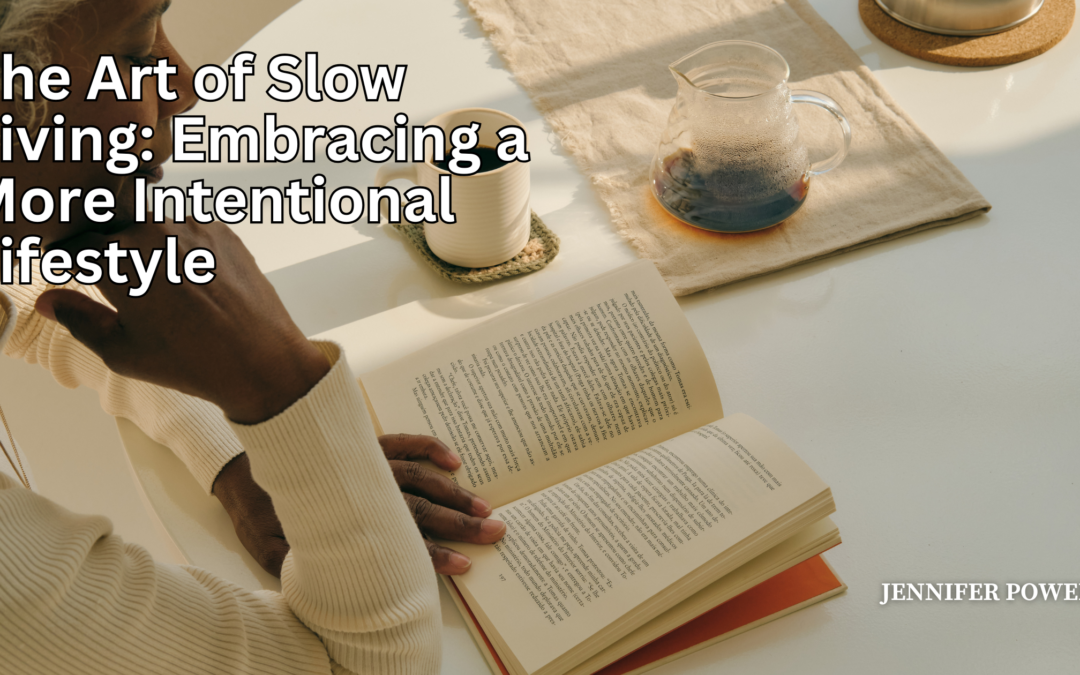In today’s fast-paced world, slow living offers a refreshing alternative. It encourages us to take a step back, appreciate the present moment, and lead a more intentional and fulfilling life. This lifestyle is about prioritizing quality over quantity, cultivating meaningful relationships, and finding joy in simplicity. Here’s how you can embrace the art of slow living and transform your daily routine.
Slow living begins with mindfulness. Being mindful means paying full attention to what is happening in the present moment without judgment. This practice helps you become more aware of your thoughts, feelings, and surroundings. Start by setting aside a few minutes each day for mindfulness meditation. Sit quietly, focus on your breath, and gently bring your attention back whenever your mind starts to wander. Over time, this practice can help reduce stress, increase focus, and enhance your overall well-being.
Another key aspect of slow living is simplifying your life. This involves decluttering your physical space as well as your mental and emotional environment. Begin by assessing your belongings and letting go of items that no longer serve a purpose or bring you joy. Create a living space that feels calm and inviting, free from unnecessary distractions. Simplifying your schedule is equally important. Prioritize activities that align with your values and bring you happiness, and don’t be afraid to say no to commitments that don’t.
Connecting with nature is a fundamental part of slow living. Spending time outdoors can rejuvenate your mind and body and help you feel more grounded. Whether it’s a walk in the park, gardening, or simply sitting outside and listening to the sounds of nature, these activities can provide a much-needed break from the hustle and bustle of daily life. Make it a habit to incorporate nature into your routine, and notice how it positively impacts your mood and energy levels.
Cultivating meaningful relationships is central to an intentional lifestyle. In the fast-paced world, it’s easy to let relationships become superficial or transactional. Slow living encourages you to invest time and effort into building deep, authentic connections with the people who matter most. Take the time to have meaningful conversations, listen actively, and express gratitude and appreciation for those around you. These actions foster a sense of community and belonging, which are essential for a fulfilling life.
Nourishing your body with wholesome, thoughtfully prepared meals is another way to practice slow living. Instead of rushing through meals or relying on fast food, take the time to plan, prepare, and enjoy your food. Cooking at home allows you to choose fresh, healthy ingredients and savor the process of creating a meal. Eating mindfully, and paying attention to the flavors, textures, and aromas, can transform a mundane activity into a moment of joy and connection.
Embracing slow living also means finding joy in simple pleasures. It’s about slowing down to appreciate the small moments that often go unnoticed. Whether it’s reading a book, enjoying a cup of tea, or spending quality time with loved ones, these moments contribute to a sense of contentment and well-being. Practice gratitude by reflecting on the positive aspects of your day, and make a habit of recognizing and celebrating the little things that bring you joy.
Ultimately, slow living is about creating a life that feels balanced, purposeful, and aligned with your values. It’s a journey of self-discovery and intentionality, where you learn to let go of what doesn’t matter and focus on what truly does. By embracing the art of slow living, you can cultivate a more meaningful and fulfilling lifestyle enriched with mindfulness, simplicity, and connection.
